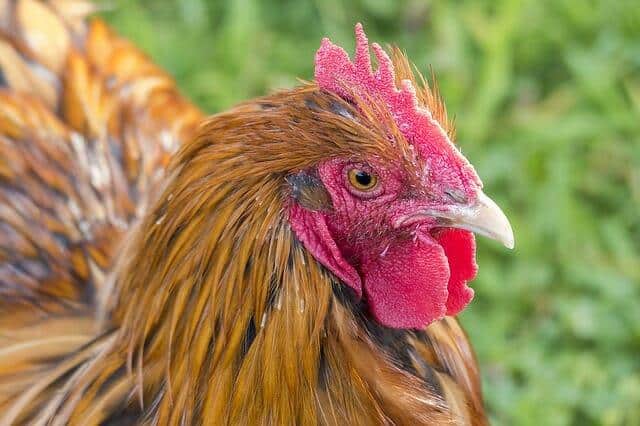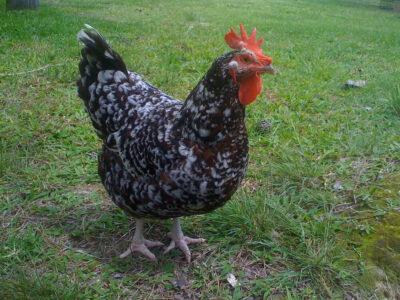Chickens are an important commodity for a homesteader, especially if you factor in a survival scenario. They are a vital source of food for your family. They also provide you with an essential item for bartering and trading.
Unless you want to rely on stores and companies to purchase chicks, you have to find a way to create a sustainable flock. The key to a sustainable flock is a broody hen. Yes, you can use an incubator to hatch fertile eggs. While it is possible, I have found letting nature take its course is easier for everyone.
Selecting the Right Breed
Unfortunately, broodiness is considered an undesirable trait in chickens. Breeders work toward breeding chickens that rarely go broody, just as we save seeds from our most prolific plants each year. Homesteaders should and need to embrace a mother hen’s natural instinct to breed.
Diatomaceous Earth: The All-Natural Livestock De-Wormer!
Despite selective breeding, there are a few types of chickens that still embrace broodiness. There is no guarantee that your hen wants to hatch eggs, but raising a few of these ups your chances.
1. Silkies. Silkies are a petite, bantam breed that are fairly docile and friendly. If you want chickens that you can pet, then go with a Silkie. Their soft feathers remind me of fur, keeping all those eggs warm. Some consider Silkies the queens of broodiness. You may not want an ornamental bird, but it will serve an important purpose to the flock.
2. Orpington. If you want to raise dual-purpose breeds, Orpingtons should be at the top of your list. They are gentle birds that lay brown eggs. Many families select this breed for family flocks, and they do well with children around. Their gentle personality lends itself to going broody.
3. Brahma. One of my favorite chickens for broodiness is Brahmas. My sweet girls, Ophelia and Amelia, hatched many clutches of eggs. Brahmas have a sweet and gentle nature, perfect for a family chicken. If you live in a cold area, I recommend Brahmas. They have feathers on their legs, but you do need to keep the mud at bay to reduce the risk of frostbite.
4. Sussex: You can buy a Sussex in a variety of colors. Many farms are filled with Sussex chickens because they are reliable layers. My girls lay steady eggs year-round, including our cold winters, without any extra lights added to the hen house. These chickens tend to have more of a varying personality, but most are friendly to handle.
Watch for Signs of Broodiness
Some hens are reliable and want to hatch a clutch of eggs each year. There is no set time for broodiness. Your chicken might prefer early spring or wait until summer is closer. There are some breeds that will return to broodiness later in the season.
Your girls won’t make a nest for hatching eggs unless they are full free-range. If your hen disappears for 20 days or more, she may be hatching a clutch of eggs. Check the bushes! I have found quite a few. Once, I found a hen and her clutch of eggs in a discarded flower pot; that was a surprise!
The community nest used by all the ladies would be where your hen decides to sit on her eggs unless you separated her from the rest of the flock to breed. Once she starts to sit on the nest full-time, you can be sure that she is broody. They won’t leave the nest, even to roost at night. Even the most docile chicken will attack your hand if you attempt to move her while sitting on her eggs.
Moving to a Broody Box
I don’t suggest that you leave a broody hen with the rest of the flock. She can cause a backup at the nesting boxes. I once checked on my girls only to find a line of chickens waiting for the broody mom to move. Sorry ladies, she wasn’t going anywhere!
Prepare a separate box for her to use with the clutch of eggs. You will want to keep her in there once the chicks are hatched, as well. A corner or isolated area works; I try to keep it close to the rest of flock for visual contact. She needs to have space for a nest, food, water, and room to walk and poop.
Move her and the eggs at night. You are less likely to disturb her them. It is best to keep the clutch to 10 eggs at maximum. At first, she will get up and move throughout the day. As she nears the final days out of the average 20 needed, she will not move at all. It is best to keep the food and water bowl as close to her as possible, especially if it is hot outside.
Soon, little chirps will come from the box! Keep the chicks separate from the flock for a few weeks to avoid being harmed. There is no need to do anything. Your broody hen has it under control. She will keep the chicks warm, teach them how to eat and drink, and later she will show them how to forage. The cycle of life, when left alone, is a beautiful thing to witness.
Have you ever raised chicks? What advice would you add? Share your own tips and tricks in the section below:
 Off The Grid News Better Ideas For Off The Grid Living
Off The Grid News Better Ideas For Off The Grid Living





